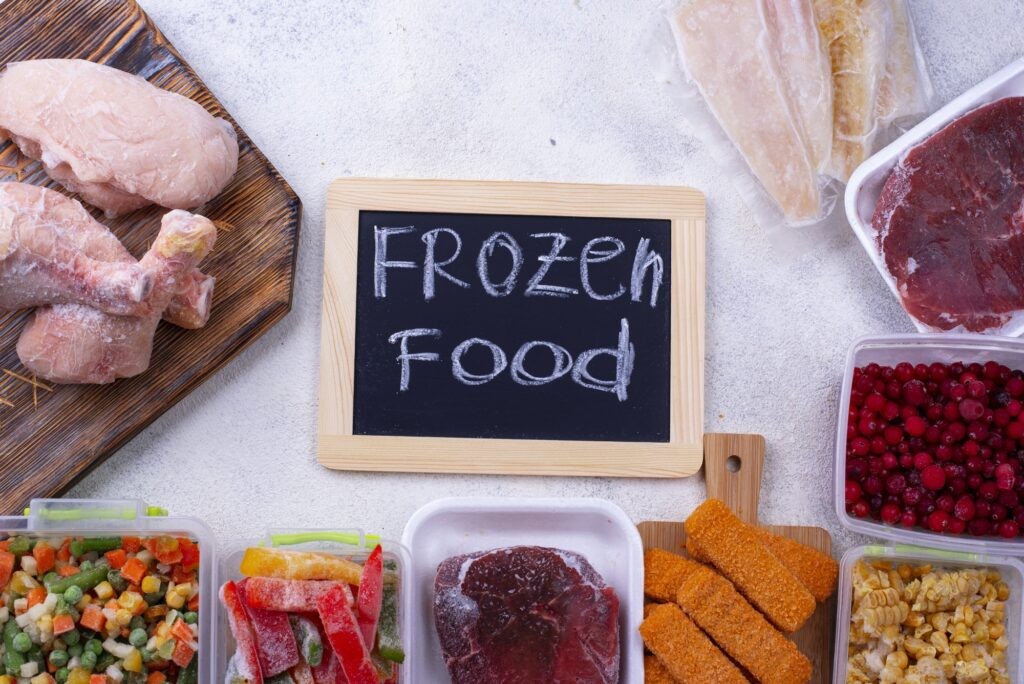Traveling with frozen food, whether for a move or a delightful road trip, demands careful planning to ensure your items stay frozen and safe to consume upon arrival. Temperature fluctuations can compromise frozen food quality, leading to spoilage. As food experts at foods.edu.vn, we’ve compiled essential strategies for successfully transporting frozen goods, maintaining their integrity throughout your journey.
Essential Steps Before You Travel
Maintaining frozen food during travel starts well before you pack your bags. Proper preparation is paramount to ensure your food remains at its optimal temperature.
Pre-Freezing is Key
Frozen foods are best equipped to withstand travel when they are thoroughly frozen to begin with. Aim to give your food items a solid 24 to 48 hours in the freezer before you plan to move them. This extended freezing period ensures they reach the lowest possible temperature, providing a buffer against thawing during transit. For even better results, consider using a deep freezer, which typically achieves lower temperatures than standard freezer compartments.
Invest in a High-Quality Cooler
The market offers a wide array of coolers, but their insulation quality is what truly differentiates them when it comes to keeping frozen food frozen. High-quality coolers are designed with superior insulation, enabling them to maintain cold temperatures for significantly longer durations. Remember, investing in a good cooler is often a case of “you get what you pay for.” Pair your cooler with ice, and you’ve got a robust system ready for packing your frozen foods. Professionals who frequently need to keep items cold on the go, like removalists, often rely on such quality coolers, attesting to their effectiveness.
Consider Cooler Bags as a Backup
While coolers are ideal, high-quality cooler bags can serve as a practical alternative, especially when space is limited or you’re transporting a smaller quantity of frozen food. The key, as with coolers, is to opt for quality. Inferior cooler bags may only maintain frozen temperatures for a few hours, whereas a well-made cooler bag, when packed with ice, can preserve frozen food for days.
 Variety of frozen food products including vegetables, meat, and berries in plastic containers.
Variety of frozen food products including vegetables, meat, and berries in plastic containers.
Pre-Chill Your Cooler for Enhanced Performance
Even the best-insulated coolers can initially retain ambient heat, especially if stored in warm environments like garages. This trapped heat can accelerate ice melting and potentially compromise your frozen food. To counter this, pre-chill your cooler a day before your travel. An effective method is to place the empty cooler in a deep freezer overnight. This pre-chilling step significantly enhances the cooler’s ability to maintain low temperatures once you pack your frozen goods.
Maximize Cold Retention with Ice Packs
To further extend the frozen state of your food during travel, supplement ice blocks or cubes with ice packs. Ice packs are designed to stay frozen for longer periods compared to regular ice, making them an excellent addition for maintaining consistently low temperatures inside your cooler. For optimal performance, freeze your ice packs for at least a couple of days prior to your journey.
Aluminum Foil for Extra Insulation
Adding a layer of aluminum foil around your frozen food items provides an extra layer of insulation. Aluminum foil helps to reflect heat and further prevent the food from warming up. Combining aluminum foil wrapping with a high-quality cooler creates a powerful duo, significantly increasing the duration your food remains frozen, potentially for several days.
By implementing these expert-recommended tips, you can travel with frozen food with confidence, ensuring it arrives at your destination still frozen, safe, and ready to be enjoyed. Proper planning and the right equipment are your best allies in keeping frozen food frozen while traveling.